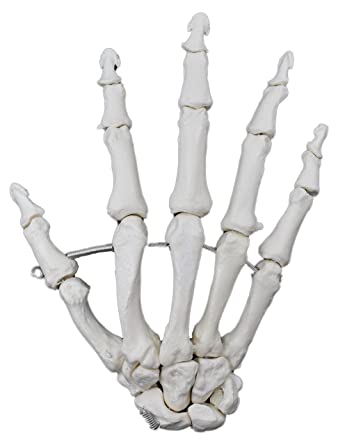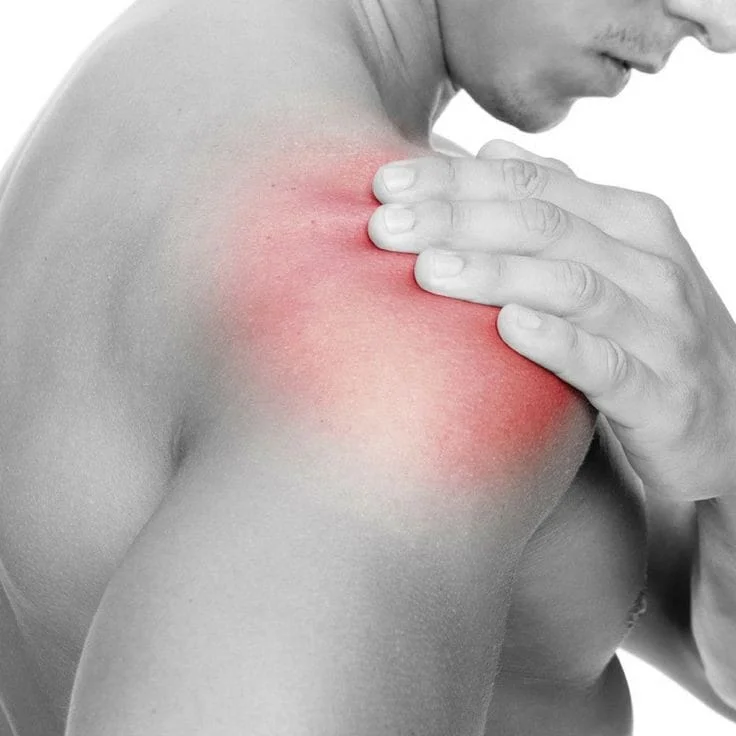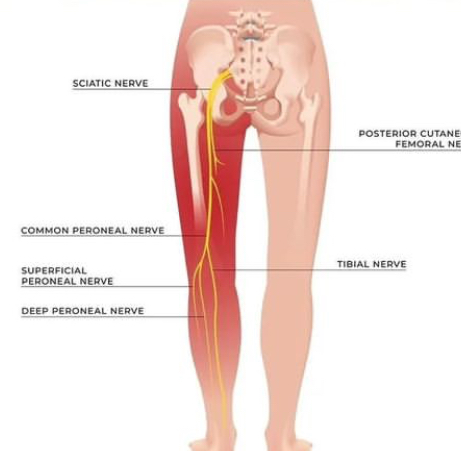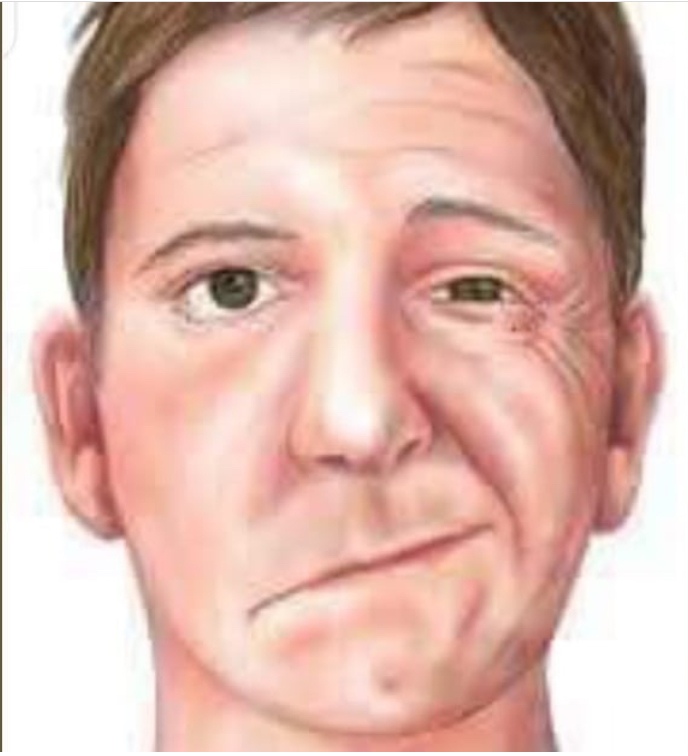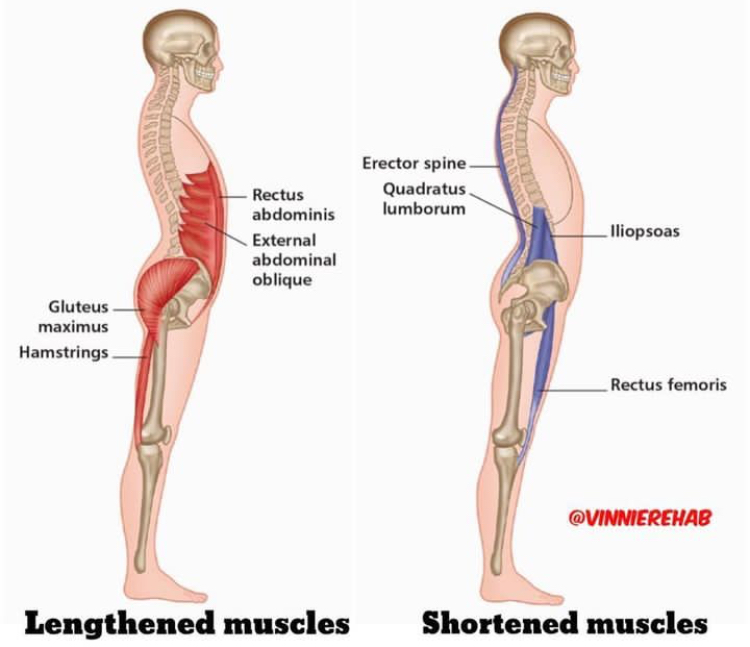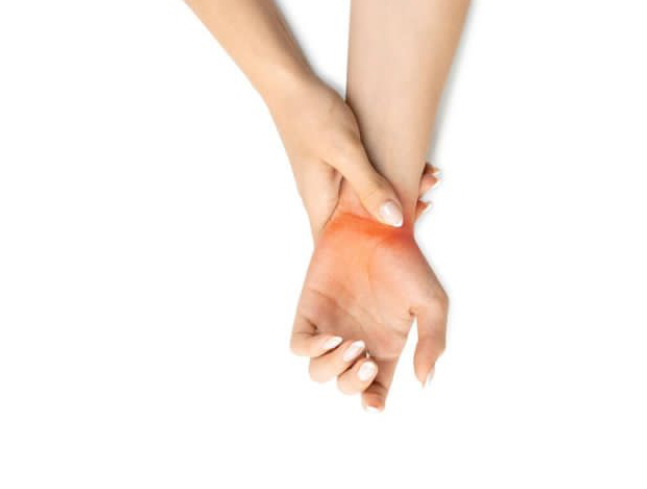Bones Of the Hand
The hand is composed of many different bones, muscles, and ligaments that allow for a large amount of movement and dexterity.
There are 3 major types of bones in the hand itself, including:
- Phalanges: The 14 bones that are found in the fingers of each hand and also in the toes of each foot. Each finger has 3 phalanges (the distal, middle, and proximal); the thumb only has 2.
- Metacarpal bones. The 5 bones that compose the middle part of the hand.
- Carpal bones. The 8 bones that create the wrist. The 2 rows of carpal bones are connected to 2 bones of the arm–the ulna bone and the radius bone.
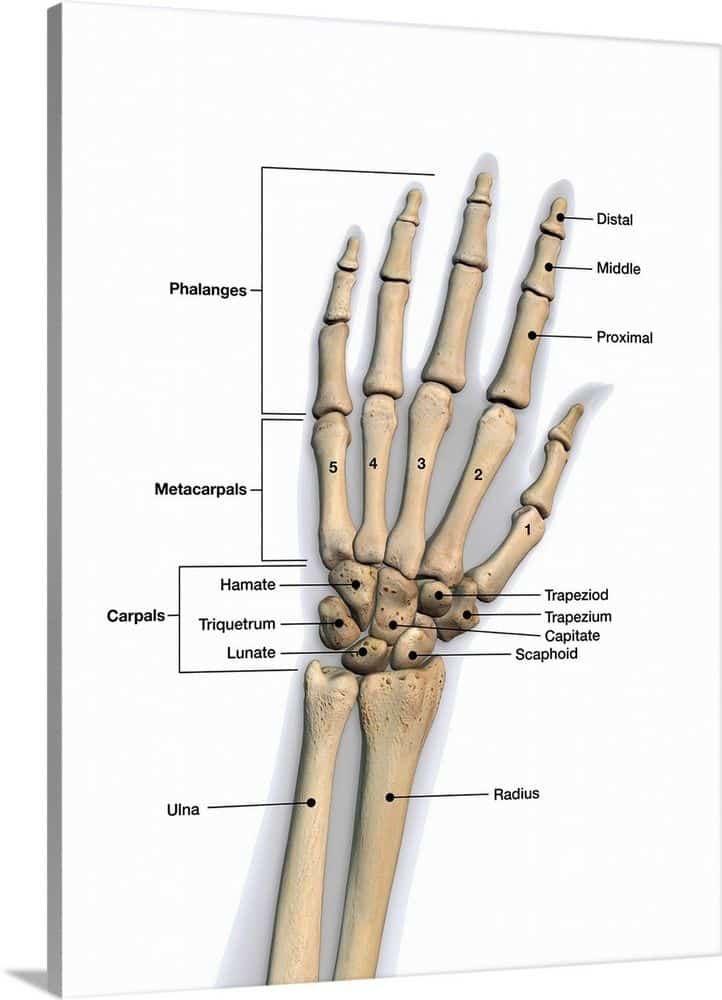
The carpus is formed from eight small bones collectively referred to as the carpal bones. The carpal bones are bound in two groups of four bones:
- the pisiform, triquetrum, lunate and scaphoid on the upper end of the wrist
- the hamate, capitate, trapezoid and trapezium on the lower side of the hand.
Other bones of the hand are:
- the metacarpals – the five bones that comprise the middle part of the hand
- the phalanges (singular phalanx) – the 14 narrow bones that make up the fingers of each hand. Each finger has three phalanges (the distal, middle, and proximal); the thumb has two.
The hand is divided into three regions:
- Proximal region of the hand is the carpus (wrist)
- The middle region the metacarpus (palm)
- The distal region the phalanges (fingers).
Carpus
- The carpus controls length-tension relationships in the multiarticular hand muscles and to allow fine adjustment of grip.
- Three of the bones in the proximal row articulate with the radius forming the radiocarpal joint and distally with the distal carpal forming the midcarpal joint.
- The four carpal bones in the distal row articulate with the bases of the five metacarpal bones forming the carpometacarpal joints.
- The joints formed between the carpal bones are known as the intercarpal joints and most are of the plane synovial type, as the bones interlock with each other the rows are sometimes referred to as two single synovial joints.
The arrangement of the bones and ligaments allows very little movement between bones, but they do slide contributing to the finer movements of the wrist.
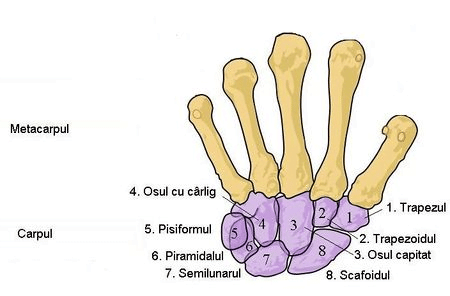
The exception to this is the capitate which has a larger range of movement .
Proximal Row
- Scaphoid – (boat like)– anterior surface palpable tubercle. Articulates proximally with radius, medially with lunate and distally with the head of the capitate. It is a common site of fracture- 70% of all carpal fractures[8], often injured by a fall onto an outstretched limb
- Lunate – (moon shaped) – Its palmar surface is smooth and convex and is larger than its dorsal surface. Proximally it articulates with the radius and articular disc, medially with the triquetrum, laterally with the scaphoid and distally with the head of the capitate
- Triquetrum – (three cornered) – Nestles in the space between the lunate and hamate. When the hand is adducted it enters the radiocarpal joint.
- Pisiform – (pea shaped) = a small round bone found in the tendon of flexor carpi ulnaris. It articulates with the palmar surface of the triquetrum. The anterior surface projects distally and laterally forming the medial part of the carpal tunnel.
Distal Row
- Trapezium – four sided figures with no two sides parallel – the most irregular, with a palpable tubercle and groove anterior medially. It articulates proximally with the scaphoid and medially with the trapezoid. Its articular surface is saddle-shaped and contributes to the mobility of the carpometacarpal joint of the thumb
- Trapezoid – four sided figure with two parallel sides – Articulates distally with the second metacarpal, laterally with the trapezium, proximally with the scaphoid and medially with the capitate
- Capitate – head shaped – The largest of all the carpal bones sitting centrally and articulating with the lunate and scaphoid, medially with the hamate and laterally with the trapezoid. The distal surface articulates mainly with the base of the third metacarpal but also by narrow surfaces with the bases of the second and fourth metacarpals.
- Hamate – hooked – This is wedge shaped with a curved palpable hook projecting from the palmar surface near the base of the fifth metacarpal.
The Carpal Tunnel – formed by the anterior concave space formed by the pisiform and hamate – on the ulnar side and the scaphoid and trapezium – on the radial side, with a roof-like covering of the flexor retinaculum (strong fibrous bands of connective tissue). The long flexor tendons of the digits and thumb and the median nerve pass through the carpal tunne.
The Metacarpus
The metacarpus, the palm of the hand, which is made up of five bones – the metacarpals. The bones are numbered laterally, from the thumb, 1 – 5. Each bone is long with a proximal quadrilateral base, a shaft (body) and a distal rounded head. The base of the first metacarpal is saddle-shaped and articulates with the trapezium. The base of the second metacarpal articulates with the trapezium, trapezoid and capitate. The base of the third metacarpal articulates with the capitate. The bases of the fourth and fifth metacarpal articulate with the hamate. The bases of the second to fifth metacarpals also articulate with each other.
The heads of the metacarpals, commonly known as knuckles, are smooth and rounded and extend onto the palmar surface – these become visible when the fist is clenched[6]. The head of the first metacarpal is wider than the others, having two sesamoid bones, usually found in the short tendons crossing the joint, which articulate with the palmar part of the joint surface. The heads fit into a concavity on the base of the proximal phalanx at the metacarpophlangeal joints.
The Phalanges
The phalanges, the fingers, consist of 14 long bones. Apart from the thumb (the pollex) each phalanx has three bones, the distal, middle and proximal phalanx – the thumb has only two distal and proximal. As with the metacarpals, the phalanges are numbered 1-5 starting at the thumb. The proximal phalanx is large and is concave for articulation with the head of the metacarpal. The shaft is curved along its length being convex dorsally. It is convex from side to side on its dorsal surface and flat on the palmar surface. The distal end, the head, is smaller and convex to articulate with the next bone in sequence. In order from the thumb, digits are also known as the index finger, middle finger, ring finger and little finger.
Joints Of The Wrist and Hand
The wrist has two degrees of freedom , although some say three degrees of freedom because they include the movements of pronation and supination , which occur at the the radioulnar joint. The radioulnar joint is often referred to as a joint of the forearm but it is this articulation that gives the wrist more freedom of movement. The true joints of the wrist and hand are listed in the table below .
| Joint | Proximal articulation | Distal Articulation | Type | Movement |
| Radiocarpal joint | Radius and articular disc/ concave | Scaphoid, lunate, triquetrum / – convex | Ellipsoid | Flexion-extension; Abduction-adduction |
| Midcarpal joint | Scaphoid. Lunate, Triquetrum | Trapezium, Trapezoid, Capitate, Hamate | Gliding | Flexion-extension; Abduction-adduction |
| Carpometacarpal joint (thumb) | trapezium | 1st metacarpal | Saddle | Flexion-extension; Abduction-adduction; circumduction; opposition |
| Carpometacarpal joint (fingers) | trapezoid, trapeziumcapitatecapitate, hamatehamate | 2nd metacarpal3rd metacarpal4th metacarpal5th metacarpal | Ellipsoidal | Flexion-extension |
| Metacarpophalangeal joints | Metacarpals | phalangeal | Ellipsoidal | Flexion, extension, abduction, adduction, circumduction |
| Interphalangeal | Proximal phalangeal | Distal phalangeal | Hinge | Flexion (lots) Extension (minimal) |
Ligaments Of The Wrist and Hand
Important ligaments of the hand are:
- Collateral ligaments – strong ligaments on either side of the finger and thumb joints, which prevent sideways movement of the joint
- Volar plate – a ligament that connects the proximal phalanx to the middle phalanx on the palm side of the joint. As the joint in the finger is straightened, this ligament tightens to keep the PIP joint from bending backward.
- Radial and ulnar collateral ligaments – a pair of ligaments which bind the bones of the wrist and provide stability
- Volar radiocarpal ligaments – a complex web of ligaments that support the palm side of the wrist
- Dorsal radiocarpal ligaments – ligaments that support the back of the wrist
- Ulnocarpal and radioulnar ligaments – two sets of ligaments that provide the main support for the wrist.
The stability of the wrist is provided by ligaments (see table); on the palmar aspect is the flexor retinaculum which together with the carpal bones forms a canal – the carpal tunnel – which nerves, muscles and blood vessels run through, it is this area that is involved in carpal tunnel syndrome.
| Ligament | Location | Function |
| Posterior radiocarpal ligament | runs diagonally across the posterior aspect of the wrist from the distal end of the radius to the triquetral and hamate carpal bones (on the ulnar side of the wrist | limits flexion of the wrist |
| Anterior radiocarpal ligament | runs from the anterior aspect of the distal end of the radius to the scaphoid, lunate and capitate bones of the wrist | Limits extension of the wrist |
| Radial collateral ligament | from the styloid process of radius to the scaphoid bone | limits adduction of wrist (frontal plane) |
| Ulnar collateral ligament | from the styloid process of the ulna to the triquetral | limits abduction (front plane) |
| Anterior, posterior and interosseous carpal ligaments | Between the carpal bones | holds carpal bones together – reinforced by the shape and interlocking structure of the bones |
| Transverse carpal ligament | flexor retinaculum | The roof of the carpal tunnel which the median nerve and flexor tendons pass through |
References
1.Apaydin N, Tubbs S, Loukas M, Duparc F. Review of the surgical anatomy of the axillary nerve and the anatomic basis of its iatrogenic and traumatic injury. Springer. 2010;32:193-201.
2. Health. (2021). Johns Hopkins Medicine. https://www.hopkinsmedicine.org/health/treatment- tests-and therapies/anatomy-of-the-hand
3.Manske R, Sumler A, Runge J. Quadrilateral space syndrome. Humen Kinetics- ATTI.2009;14(2):45-47.
4.Miller T. Peripheral nerve injuries at the shoulder. The Journal of Manipulative Therapy. 1998;6(4)170-183.
5.Miller T. Axillary neuropathy following traumatic dislocation of the shoulder: a case study. The Journal of Manual & Manipulative Therapy. 1998;6(4):184-185.
6.Muscles of the Hand. (2021). Teach Me Anatomy. https://teachmeanatomy.info/upper- limb/muscles/hand/
7.Muscles in the Posterior Compartment of the Forearm. (2021). Teach Me Anatomy. https://teachmeanatomy.info/upper-limb/muscles/posterior-forearm/
8. Nerve Supply to the Upper Limb. (22 October 2021). https://geekymedics.com/nerve-supply-to- the-upper-limb/#Musculocutaneous_nerve_C5C6C7
9.Palastanga, N. P., Soames, R. W., & Nigel Palastanga MA BA FCSP DMS DipTP (2011). Anatomy and human movement: Structure and function (Physiotherapy essentials) (6th ed.). Edinburgh: Churchill Livingstone.
10.Radial nerve. (2021). Physiopedia. https://www.physio-pedia.com/Radial_nerve
11.The Axillary Nerve. (2021). Teach Me Anatomy. https://teachmeanatomy.info/upper- limb/nerves/axillary-nerve/
12.The Brachial Plexus. (2021). Teach Me Anatomy. https://teachmeanatomy.info/upper- limb/nerves/brachial-plexus/
13.The Median Nerve. (2021). Teach Me Anatomy. https://teachmeanatomy.info/upper- limb/nerves/median-nerve/
14.The Musculocutaneous Nerve. (2021). Teach Me Anatomy. https://teachmeanatomy.info/upper- limb/nerves/musculocutaneous-nerve/
15.The Radial Nerve. (2021). Teach Me Anatomy. https://teachmeanatomy.info/upper- limb/nerves/radial-nerve/
16.The Ulnar Nerve. (2021). Teach Me Anatomy. https://teachmeanatomy.i
Subacromial impingement syndrome “SAIS”
Contents of this article: Introduction about SAIS Anatomy and Incidence Pathophysiology Pathophysiology Differential diagnosis Presentation...
5 EASY SCIATICA STRETCHES
Anatomy of sciatic nerve Sciatic nerve is the largest nerve in the body, it’s made...
Does Electro stimulation affect Bell’s palsy?
Introduction.. Definition: Signs and Symptoms of Bell’s palsy: Causes of Bell’s palsy: Risk factors: Complications...
Relationship between Muscle Imbalance and pelvic Tilt.
Chronic fatigue syndrome or Myalgic encephalomyelitis “ CFS”
Are you tired all the time ? Have you heard before about Chronic fatigue syndrome...

